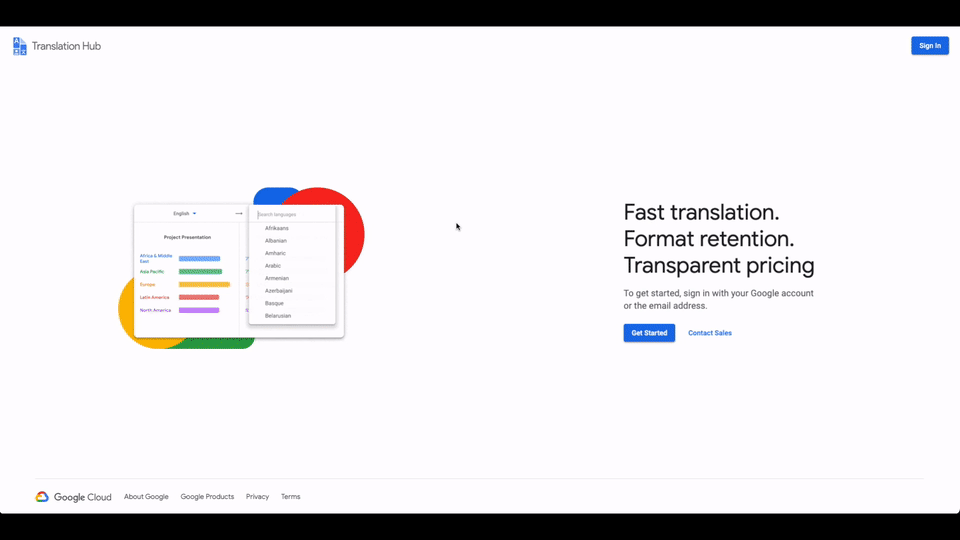
(Source – Shutterstock)
For Google, 2023 is about helping businesses in Southeast Asia unlock more possibilities with the cloud
As one of the world’s largest cloud services provider, Google Cloud represents a significant market share in Southeast Asia, especially in helping businesses in their digital transformation journey. In fact, as 2022 comes to an end, organizations in Southeast Asia have had an interesting year when it comes to tech adoption. Having sped up the journey to cloud during the pandemic, many made 2022 the year whereby they really focused on how they can leverage the cloud to improve their business and enhance productivity.
2023 is expected to see the momentum continue. However, with economic uncertainties on the horizon as well as a lack of sufficient digital skills, are organizations able to keep their digital journey going with minimal disruption?
Ruma Balasubramanian, Managing Director, Southeast Asia, Google Cloud speaks to Tech Wire Asia on how the tech giant is looking forward to enabling organizations to deal with the challenges at hand as well as how emerging technologies can make a difference for businesses.
What was the biggest challenge organizations faced in their cloud journey in 2022? Will 2023 see them face similar challenges?
Today, every company in every industry wants to become a big data company (i.e., acquire the ability to unlock value from their data by using a platform that helps them analyze and visualize insights, and act on them in real-time – while maintaining the highest security standards). They recognize data as a strategic asset. They know that tailor-made products and experiences are far more valuable to their businesses and their customers.
One big challenge that has held back many of these enterprises is data sprawl: too much data, too spread out, with too much to parse and understand – and all of which is locked up in silos. For far too long, they have been constrained by walled garden technology stacks that are not designed to power analytics – and artificial intelligence (AI) and machine learning (ML) for that matter – at the required speed and scale to thrive in a mercurial business landscape. If you ask in-house technology teams who have used these walled garden systems in the past, they will tell you that the technical complexity one must overcome to map multiple proprietary data formats to each other feels like root canal treatment.

Ruma Balasubramanian, Managing Director, Southeast Asia, Google Cloud (Source – Google)
2022 has therefore seen more enterprises turn to Google Cloud to effectively implement an open data cloud approach, where we help them to build a unified repository – called a cloud data lake or data ocean if you will – that is underpinned by open storage formats, open application programming interfaces (APIs), and end-to-end encryption that can only be unlocked by individuals with a security key. This then allows data teams to easily organize data (and metadata), create automated pipelines, and enable streaming analytics that deliver real-time, holistic, and actionable insights to their business intelligence tools and dashboards of choice, such as Looker, Power BI, or Tableau.
Companies that are benefiting from an open data cloud approach include Gojek, airasia Super App, and Robinhood. With insight into customer sentiment and emerging trends – including an understanding of the travel sector’s recovery trajectory and consumption patterns around food delivery, ride-hailing, financial services, and more – these companies have expanded into adjacent product areas and are now serving hyper-personalized recommendations to users on behalf of the merchants on their platforms.
An open data cloud approach is providing enterprises with the additional brains and solid backbone to achieve business differentiation and expansion. We expect this trend to persist in 2023. This is why Google Cloud continues to invest in a Data Cloud Alliance, and at Next ‘22, we announced new capabilities like cross-cloud data transfers and easy replication of data from operational databases – such as AlloyDB, PostgreSQL, MySQL, and Oracle – directly into BigQuery with a few simple clicks.
Will AI and machine learning solutions continue to see increased adoption as organizations race to make the most out of their data?
Every company knows that they are competing in an AI-driven world. The technology is powering many things – from remote work to manufacturing priorities. It has been built into internet searches, email spam filters, online shopping, digital photo services, and more.
In 2023, as organizations aim to do more with less, the ability to inject AI into workflows or understand AI-based tools cannot be confined to those with data science and programming skills, it must be accessible to everyone. The widespread adoption of AI will therefore increasingly involve a category of cloud-based applications called “AI agents”.
AI agents are technologies that let organizations apply the best of AI to common business challenges, with limited technical expertise required by employees.
Advances in neural machine translation and automated machine learning (AutoML) are now making it easy and cost-effective for employees to translate content from the most common enterprise document types (e.g., PDF, Google Docs, Google Slides, Microsoft Word) into more than 130 languages. This type of AI agent not only preserves layouts and formatting, but also provides granular management controls like support for post-editing human-in-the-loop feedback and document review. The result: researchers can now share their findings instantly across the world, goods and services providers can engage underserved markets, and public sector administrators can reach more members of their communities in a language they understand.

AI Agent
Other examples include AI agents that:
- Speed up procurement cycles involving invoices and receipts, and contracting to close deals, by simplifying and automating document processing
- Scale call center support by intelligently routing customers, facilitating handoffs between virtual and human customer support representatives, and analyzing call transcripts for trends
AI has become a key investment area for many companies’ long-term success. However, most of them are still in an experimental phase with AI and have not fully put the technology into production because of long deployment timelines and IT staffing needs. 2023 will see companies draw a clear and more intentional distinction between where they build their own AI and where they can simply adopt democratized cloud-based AI tools that can be immediately applied to automate processes and solve business problems.
When it comes to building their own AI, companies’ data scientists often grapple with the challenge of manually piecing together ML point solutions, creating a lag time in model development and experimentation, and resulting in very few models making it into production.
A company can build a data management foundation without building any AI, but no one can build a useful AI without investing in their data substrate. TD Tawandang, a retail technology company that serves mom-and-pop stores in Thailand, for instance, has combined predictive modeling, Vertex AI, and business intelligence tools to help its retail distribution teams forecast demand and schedule deliveries for just-in-time stock replenishments. Ocean Network Express, a global container shipping company headquartered in Singapore, is combining its data lake with AI platform pipelines built on machine learning operations (MLOps) best practices to ensure logistics operating precision.
2023 will see more companies similarly extend their established open data cloud architectures and incorporate the use of cloud-based MLOps platforms like Vertex AI to efficiently build and manage ML projects throughout the entire development lifecycle. By using Vertex AI’s pre-trained APIs around computer vision, language, structured data, and conversation, far fewer lines of code and time will be required to operationalize models and algorithms, thereby enabling teams to move AI out of the pilot purgatory and into full-scale production.

Google Cloud training skills program. (Source – Google)
Skills shortage is an ongoing problem. Given the increased training and upskilling programs, will 2023 see this become less of an issue?
One of the challenges that enterprises continue to face in their digitization journey is the scarcity of skilled talent. Organizations don’t have the ability to keep up with in-house training and are unable to do it all themselves. To ensure that the world has enough skilled talent to implement transformative technologies at scale, in October 2021, Google Cloud made a global commitment to train up to 40 million people as a part of our Google Cloud Skills Boost program. Through this initiative, we aim to remove barriers for businesses and drive career success for individuals.
To help address the growing demand for digital talent across Southeast Asia, Google has also been rolling out digital training programs that offer flexible learning paths to local individuals. One example is the Gemilang program that was launched in Malaysia this year. We also have similar programs that are tailored for Indonesia (Bangkit), Singapore (Skills Ignition SG), Thailand (Samart Skills), the Philippines, and Vietnam.
The driving force behind digital transformation is people with the skills required to implement and maintain large-scale cloud deployments, particularly in areas like AI, ML, data analytics, application development, security, and cloud architecture. Given that we’re still in the early days of cloud adoption and digital transformation remains a journey rather than a destination, we believe that there’s always more that can be done to nurture a skilled talent pool that is proficient in using cloud-based technologies to create innovative and best-in-class solutions that deliver value to businesses and society and help elevate our countries in Southeast Asia to be amongst the world’s most competitive economies.
In the second half of the article, Balasubramaniam explains which areas in the cloud businesses will most likely increase their focus on as well as plans Google Cloud has for the Southeast Asian region in 2023
READ MORE
- The criticality of endpoint management in cybersecurity and operations
- Ethical AI: The renewed importance of safeguarding data and customer privacy in Generative AI applications
- How Japan balances AI-driven opportunities with cybersecurity needs
- Deploying SASE: Benchmarking your approach
- Insurance everywhere all at once: the digital transformation of the APAC insurance industry


